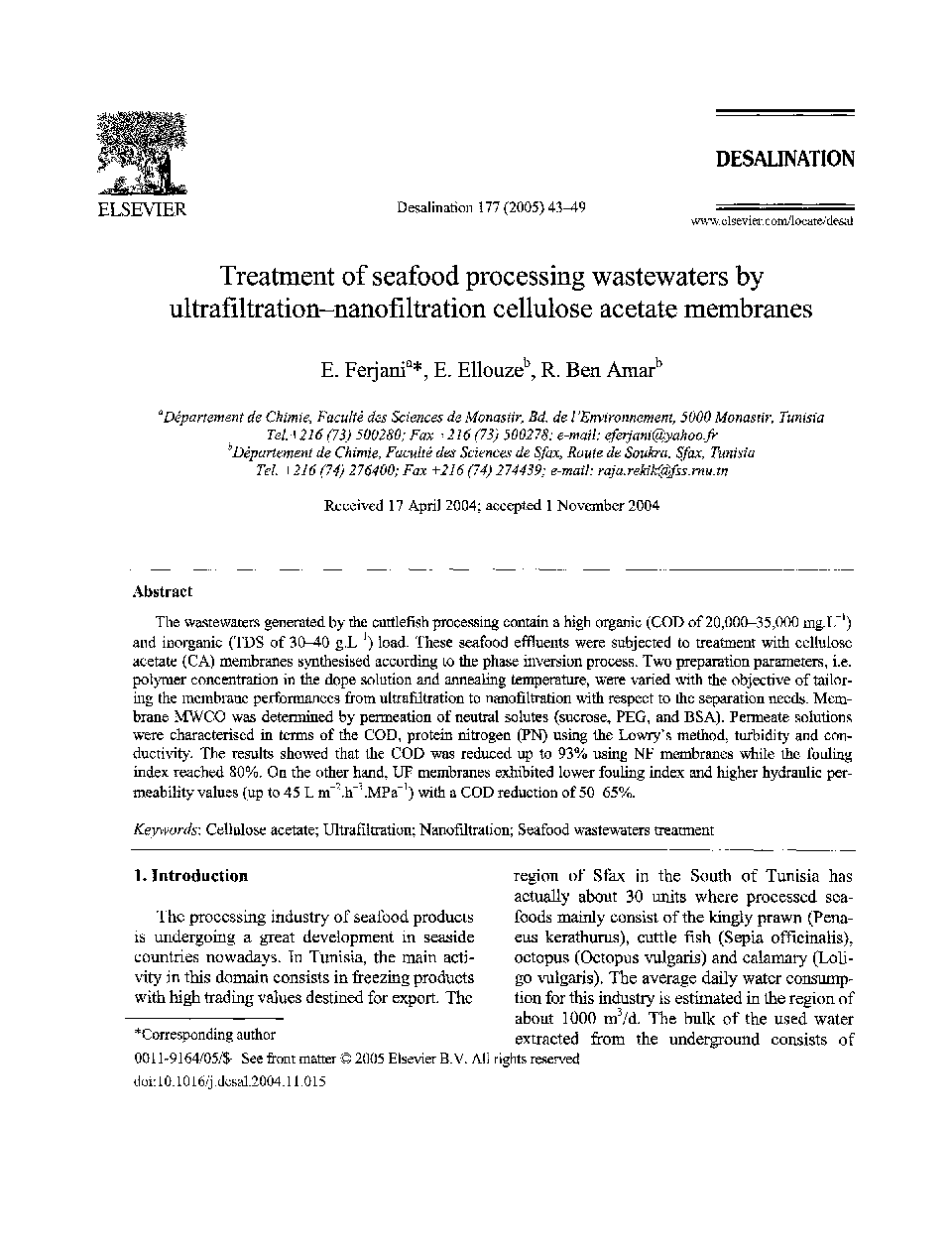| Article ID | Journal | Published Year | Pages | File Type |
|---|---|---|---|---|
| 9681169 | Desalination | 2005 | 7 Pages |
Abstract
The wastewaters generated by the cuttlefish processing contain a high organic (COD of 20,000-35,000 mg.Lâ1) and inorganic (TDS of 30-40 g.Lâ1) load. These seafood effluents were subjected to treatment with cellulose acetate (CA) membranes synthesised according to the phase inversion process. Two preparation parameters, i.e. polymer concentration in the dope solution and annealing temperature, were varied with the objective of tailoring the membrane performances from ultrafiltration to nanofiltration with respect to the separation needs. Membrane MWCO was determined by permeation of neutral solutes (sucrose, PEG, and BSA). Permeate solutions were characterised in terms of the COD, protein nitrogen (PN) using the Lowry's method, turbidity and conductivity. The results showed that the COD was reduced up to 93% using NF membranes while the fouling index reached 80%. On the other hand, UF membranes exhibited lower fouling index and higher hydraulic permeability values (up to 45 L mâ2.hâ1.MPaâ1) with a COD reduction of 50-65%.
Related Topics
Physical Sciences and Engineering
Chemical Engineering
Filtration and Separation
Authors
E. Ferjani, E. Ellouze, R. Ben Amar,
